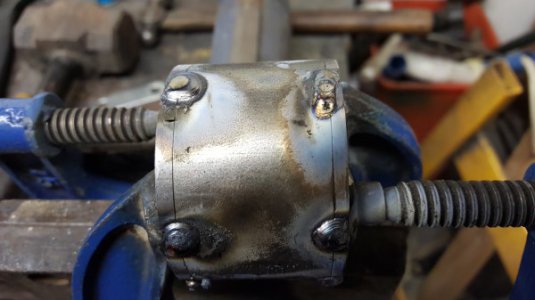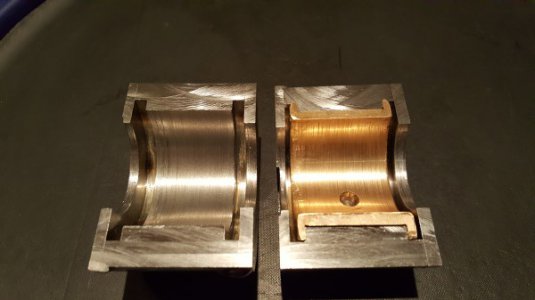I pour Babbitt quite a bit (at least compared to most folks). In my free time I rebuild old farm windmills, most of which used poured Babbitt.
What size and kind of engine is this? You did not have to worry about bearing pressure with most of the old hit & miss or throttle governed engines. Keep in mind everything in that link you posted pertains to ship engines ... things are on a bit different scale.
I would try a couple of things. I'm guessing you really won't be running this engine much? or am I wrong? I would take those nice molds you made and instead of putting in the brass/bronze bearings and pouring, I would pour the entire bearing out of Babbitt. Leave yourself some room so you can shim it and have a tight fit, when both sides are completed. If you want a tight fit on the bearing, blacken the shaft with acetylene. If you want a little clearance, wrap your crank/shaft with a single layer of paper taped together at the butt edges. A glossy page from a magazine works well, as does a paper sack from the grocery store (for a bit more clearance). Don't worry about the paper burning from the molten Babbitt.
There are also different grades of Babbitt for different applications. Anywhere from slow speed applications to high speed turbines, lathes, ship engines, etc. At 600 rpm, low load, I think you are fine with a lead based babbitt.
Make sure you seal up any & all cracks and seams in the mold & shaft. Not doing so will result in you doing a dance to avoid the hot molten Babbitt when it pours out of the smallest cracks ... don't ask me how I know this.




